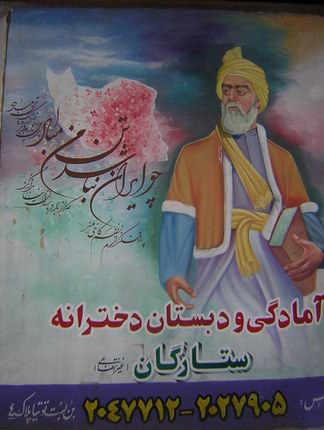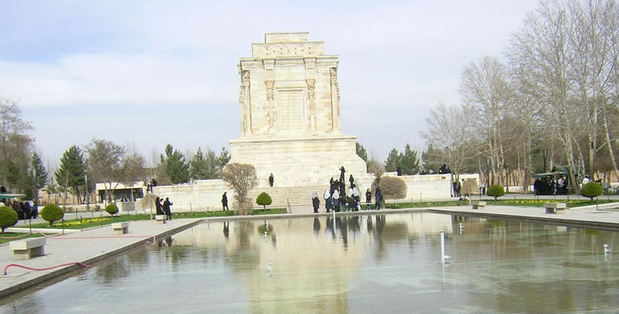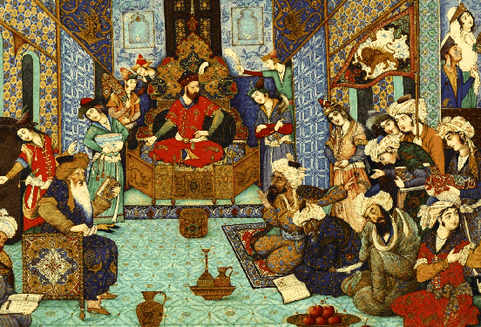The Most Persian Persian
“There he is!”

One afternoon in early spring, when the crocuses were starting
to come out in the parks and fresh white asphodels were filling up
the glass florists’ shops on the roadsides, the Professor met me outside
the Literature Faculty of Tehran University. Taking off his homburg
and holding it in front of him, he stood, in a respectful bow.
Above us, sitting cross-legged on a cushion, with the end of his turban
draped over his shoulder, was the poet Ferdowsi. If he didn’t
happen to be made out of bronze, you might imagine he was sitting
in a teahouse, ready to recite one of his tales.
“So is he your favorite poet?” I asked.
“Favorite?” The Professor snorted. “Favorite has nothing to do
with it. Look at him, he is more even than a poet, he is . . . ”
He stopped for a moment, as if he needed to work this one out.
“He is . . . the most Persian Persian who ever lived. Yes, that is it—
the most Persian Persian. Do you understand?”
“I think so.”
There was a bench nearby. The Professor lowered himself onto it,
holding the armrest as he looked at the poet.
“In your culture,” he said, “people do not remember poetry, do
they?”
“Well, some people do.”
 “But not everyone? You see, child? In Iran,
“But not everyone? You see, child? In Iran, everyone remembers poetry. Everyone can remember lines from Ferdowsi,
for example. This is why he is so important! Without him, we would not speak Persian.
Without him, we would have no history, no heritage. Without him, we
would be like all the other countries the Arabs attacked—we would be
extinct! An Iranian, a Persian speaker, would be the same as a dodo or
a Phoenician. People would talk about it as if it was something from
the past.”
As I stood looking at the bronze poet from a thousand years ago, it
was as if I were watching him come to life. As if his toes were starting
to twitch inside those curly-ended shoes and his lips were quivering
over his long twisting beard. Without this extraordinary figure from
the past, Iran would have no present. Which made him more important
to the country today than any other aspect of its culture. Because
Ferdowsi and his
Shahnameh represent the national cultural DNA.
“He was a farmer from the east of our country,” said the Professor,

“a province called Khorasan, near the border with Afghanistan.
He saw that our Persian culture was in decline—ever since the Arabs
invaded, they tried to make us speak Arabic and even if they didn’t
succeed, many Arabic words became stuck in our language, like mud
on your shoes when you have fallen in the dirt. So he decided to do
something about it. You have to understand who this man was! He
loved everything that made us Persian. He loved drinking wine, he
loved our literature and our history, he loved the land, the mountains,
the rivers, the sun. Oh yes, he was a Muslim—but more than
that he was Persian! So for thirty-five years he worked without stopping,
purifying the language all the way to its roots and collecting
the legends and the history of the days before the Arabs came, the
time of the shahs. Then he took his book, the
Shahnameh, to the richest lord in this part of the world—Sultan Mahmud of Ghazni.”
The Professor looked at me, his owl-like eyes expanding, his face
lengthening like a shadow at dusk...
To read an extract from The Prester Quest, click here.